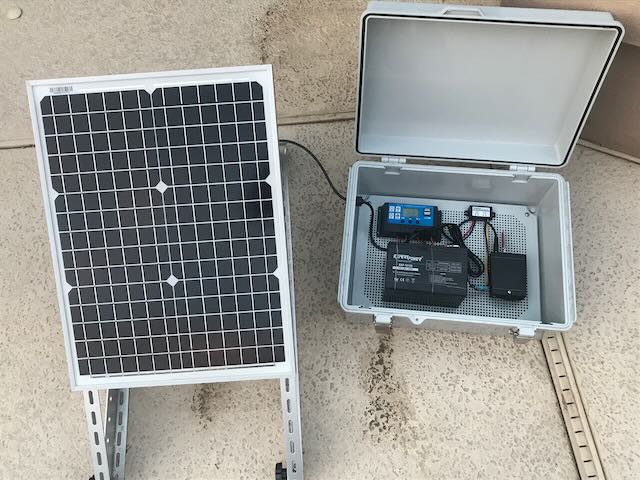Servers and data centers around the world consume a significant amount of energy, but could solar energy be the solution? A few months ago, I built a solar powered webserver in my backyard to find out.
My Inspiration
Almost a year ago, I came across Low Tech Magazine’s solar powered website. Their solar website has features which decrease its energy footprint, such as static webpages and default font usage. Additionally, Solar Protocol is another concept of a “network” of solar powered servers. As a high school student, I was really intrigued by these solar powered websites and I decided to make my own.
Research
This was my first computer project involving hardware, so I did a decent amount of planning. While it is obvious that I would need a solar panel and a computer, I also needed a solar charge controller, a bunch of wires with specific connectors, a voltage reducer, and also a variety of other parts. I also read about how to flash the operating system from an SD card and enabling port forwarding on my home’s router, which allows anyone on the internet to access a computer on a network.
Building the Server
Since Low Tech Magazine’s website has a decent amount of information on how to build a solar powered website, I used some of the same materials as them. First, I flashed the lightweight linux-based Armbian operating system on to an SD card and plugged it into an Olimex A20 Lime2 computer that I bought.

Then, I installed the nginx web server on the computer and I wrote the website’s HTML code. I also wrote a script that publishes basic server statistics, such as the CPU temperature, on the website.
Soon, I was ready to build the server and I set it up outside. I decided to place all of the non-waterproof electronic components inside a junction box and I fastened the solar panel to a mount that I could put on the ground in my backyard. Notably, I added a battery to allow the server to run at night and on cloudy days.

Finally, after much effort, I got the website up and running!
Improvements
Albeit, the website isn’t perfect and could use a few improvements:
- The router connecting the server to the internet mostly runs on grid energy.
- The analytics platform I used for the site (Splitbee.io) does not run entirely on renewable energy. Instead, I could try to host analytics locally in the future.
Visiting the Site
Want to visit the site? You can check it out at https://solar.leo32345.com.
